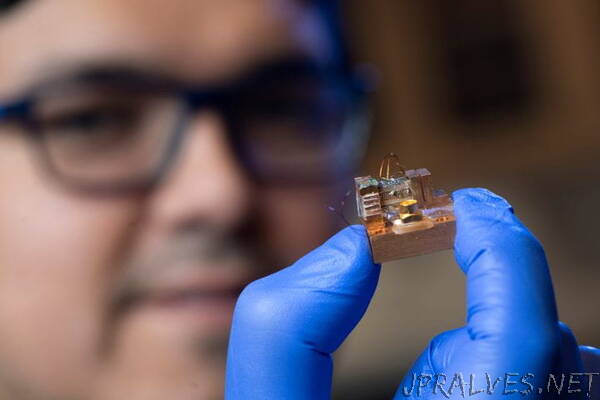
“Researchers at the University of California, Irvine and Los Alamos National Laboratory, publishing in the latest issue of Nature Communications, describe the discovery of a new method that transforms everyday materials like glass into materials scientists can use to make quantum computers.
“The materials we made are substances that exhibit unique electrical or quantum properties because of their specific atomic shapes or structures,” said Luis A. Jauregui, professor of physics & astronomy at UCI and lead author of the new paper. “Imagine if we could transform glass, typically considered an insulating material, and convert it into efficient conductors akin to copper. That’s what we’ve done.”
Conventional computers use silicon as a conductor, but silicon has limits. Quantum computers stand to help bypass these limits, and methods like those described in the new study will help quantum computers become an everyday reality.
“This experiment is based on the unique capabilities that we have at UCI for growing high-quality quantum materials. How can we transform these materials that are poor conductors into good conductors?” said Jauregui, who’s also a member of UCI’s Eddleman Quantum Institute. “That’s what we’ve done in this paper. We’ve been applying new techniques to these materials, and we’ve transformed them to being good conductors.”
The key, Jauregui explained, was applying the right kind of strain to materials at the atomic scale. To do this, the team designed a special apparatus called a “bending station” at the machine shop in the UCI School of Physical Sciences that allowed them to apply large strain to change the atomic structure of a material called hafnium pentatelluride from a “trivial” material into a material fit for a quantum computer.
“To create such materials, we need to ‘poke holes’ in the atomic structure,” said Jauregui. “Strain allows us to do that.”
“You can also turn the atomic structure change on or off by controlling the strain, which is useful if you want to create an on-off switch for the material in a quantum computer in the future,” said Jinyu Liu, who is the first author of the paper and a postdoctoral scholar working with Jauregui.
“I am pleased by the way theoretical simulations offer profound insights into experimental observations, thereby accelerating the discovery of methods for controlling the quantum states of novel materials,” said co-author Ruqian Wu, professor of physics and Associate Director of the UCI Center for Complex and Active Materials — a National Science Foundation Materials Research Science and Engineering Center (MRSEC). “This underscores the success of collaborative efforts involving diverse expertise in frontier research.”
“I’m excited that our team was able to show that these elusive and much-sought-after material states can be made,” said Michael Pettes, study co-author and scientist with the Center for Integrated Nanotechnologies at Los Alamos National Laboratory. “This is promising for the development of quantum devices, and the methodology we demonstrate is compatible for experimentation on other quantum materials as well.”
Right now, quantum computers only exist in a few places, such as in the offices of companies like IBM, Google and Rigetti. “Google, IBM and many other companies are looking for effective quantum computers that we can use in our daily lives,” said Jauregui. “Our hope is that this new research helps make the promise of quantum computers more of a reality.”
Funding came from the UCI-MRSEC — an NSF CAREER grant to Jauregui and Los Alamos National Laboratory Directed Research and Development Directed Research program funds.”
